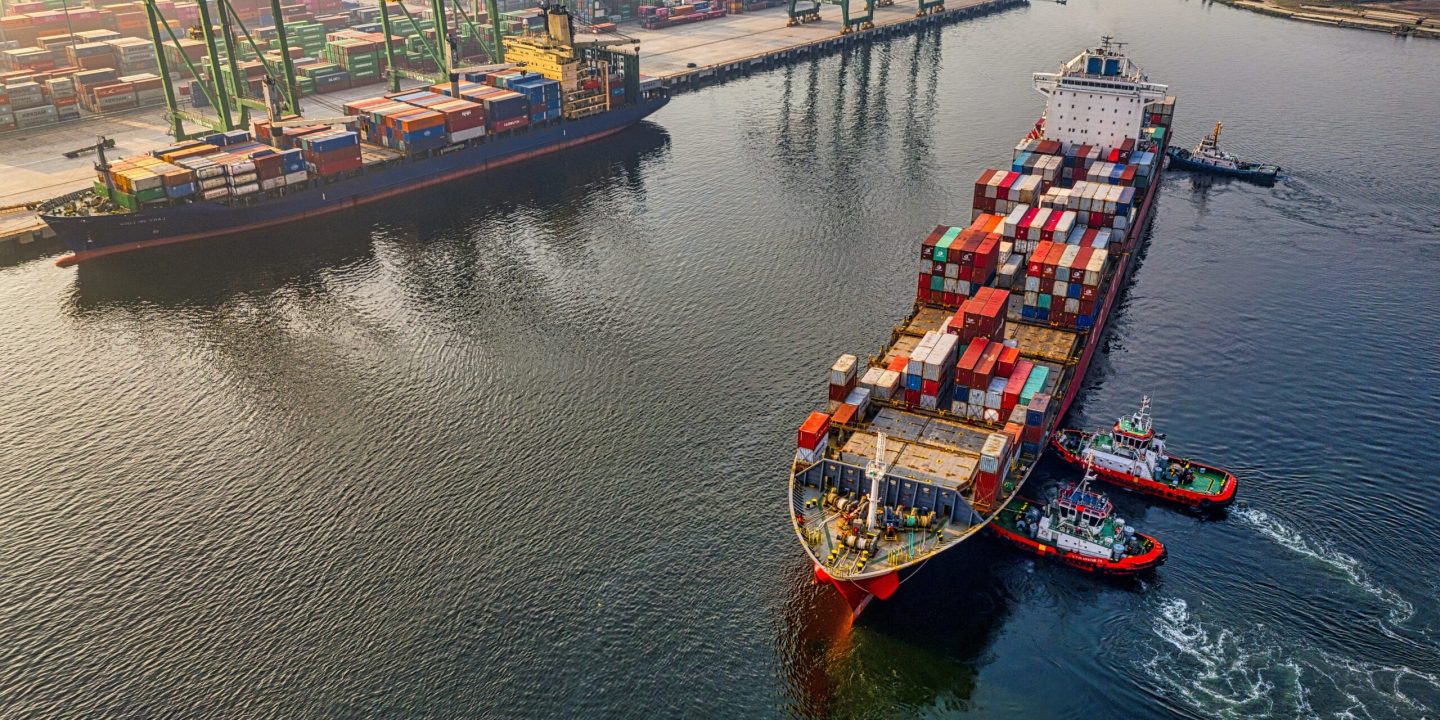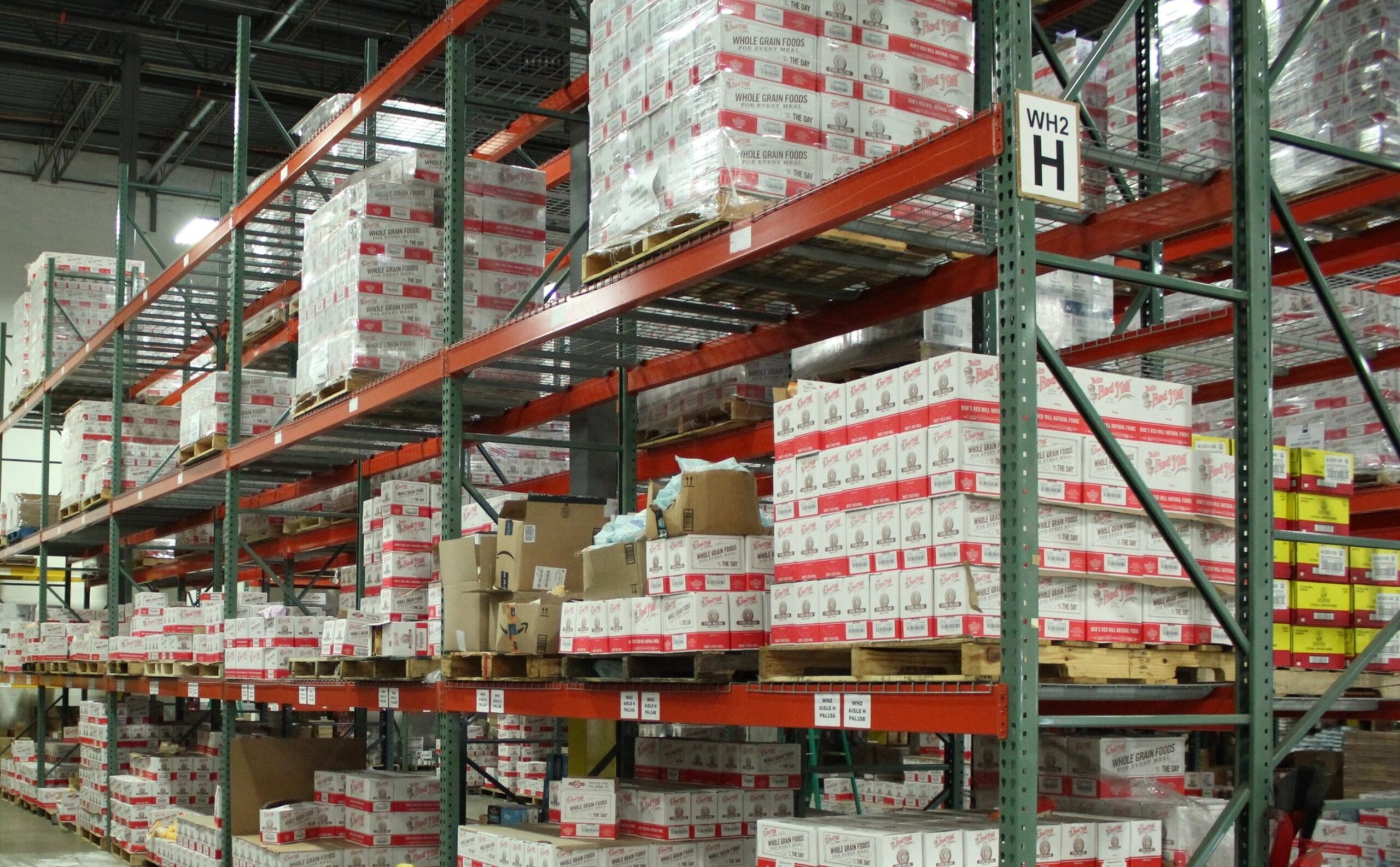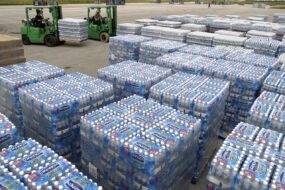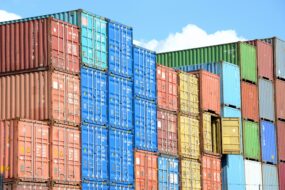Contents

Different types of transportation each have their own benefits and drawbacks, and companies might use multiple types to ship the same product.
When a company ships a table from the manufacturer in Vietnam to their warehouse in Louisville, Kentucky, that table may be transported using 3-5 different types of transportation.
For instance, it may start on a full-truckload using a “drayage” carrier to the port, loaded on an ocean container (1), unloaded on and shipped on an intermodal train (2) or full-truck load carrier (3) and delivered to a parcel carrier (4) to the end customer. Confusing, right? I put this article together based on my experience in the industry to dispel the mystery and help you understand each type of transportation better.
In the world of supply chain and logistics, transportation plays a vital role in moving goods from one place to another. However, not all transportation is created equal. There are various transportation options available to shippers, each with its own set of pros and cons. This article will explore the different types of transportation, including Full Truckload (FTL), Less Than Truckload (LTL), Ocean Freight, Air Freight, Intermodal Transportation, and Parcel Shipping.
Full Truckload (FTL)
Full Truckload (FTL) transportation involves using an entire truck for a single shipment. It’s typically used for larger shipments that require more space. FTL offers faster transit times and a lower risk of damage or loss due to fewer handling points. Additionally, FTL offers increased capacity for larger shipments. However, FTL can be more expensive than LTL (discussed next) for smaller shipments, and there is limited flexibility in terms of routes and schedules.
Pros:
- Faster transit times
- Lower risk of damage or loss
- Increased capacity for larger shipments
Cons:
- Higher cost compared to LTL for smaller shipments
- Limited flexibility in terms of routes and schedules
Major players:
- J.B. Hunt Transport Services
- Schneider National
- Werner Enterprises
- Swift Transportation
- Knight Transportation
Less Than Truckload (LTL)
Less Than Truckload (LTL) transportation is a type of transportation that consolidates smaller shipments from multiple customers into a single truckload. LTL offers cost-effectiveness for smaller shipments, greater flexibility in terms of routes and schedules, and reduced risk of damage or loss due to more handling points. However, LTL has slower transit times and an increased risk of damage or loss compared to FTL.
Pros:
- Cost-effectiveness for smaller shipments
- Greater flexibility in terms of routes and schedules
- Reduced risk of damage or loss
Cons:
- Slower transit times
- Increased risk of damage or loss compared to FTL
Major players:
Ocean Freight
Ocean Freight moves cargo across the ocean using large cargo ships, ideal for long-distance shipments and large shipments. Ocean Freight offers cost-effectiveness, high capacity, and a reduced carbon footprint compared to air freight. However, it has longer transit times, increased risk of damage or loss, and limited accessibility to inland locations.
A key thing to understand about Ocean Freight when booking a shipment is the difference between an NVOCC (Non-Vessel Operating Common Carrier) and a Steamship Line: A NVOCC is a company that arranges the transportation of goods for shippers but does not own or operate any vessels. NVOCCs typically negotiate rates with ocean carriers and then consolidate smaller shipments from multiple shippers into full containers for ocean transport.
On the other hand, a steamship line owns the cargo vessels and containers used for transporting cargo over water. Vessels are typically owned or operated by ocean carriers or shipping lines that transport goods for shippers.
In summary, an NVOCC is a middleman that arranges transportation for shippers, while a steamship line is a means of transportation for cargo that is owned and operated by ocean carriers or shipping lines.
Pros:
- Cost-effectiveness for long-distance shipments
- High capacity for large shipments
- Reduced carbon footprint compared to air freight
Cons:
- Longer transit times
- Increased risk of damage or loss
- Limited accessibility to inland locations
Major players:
Air Freight
With Air Freight, you’re moving cargo by air using planes. It offers faster transit times, greater security and safety for high-value shipments, and accessibility to remote locations. However, it is more expensive than other types of transportation, and there is limited capacity for large or heavy shipments.
Pros:
- Faster transit times
- Greater security and safety for high-value shipments
- Accessibility to remote locations
Cons:
- Higher cost
- Limited capacity for large or heavy shipments
Major players:
Intermodal Transportation
Intermodal Transportation is a type of transportation that combines multiple types of transportation, such as rail, truck, and ocean or air, to move cargo from one place to another. It offers increased flexibility in terms of routes and schedules, reduced transportation costs, and a reduced carbon footprint compared to truck-only transportation. However, it has longer transit times and increased complexity in terms of coordination and logistics.
Pros:
- Increased flexibility in terms of routes and schedules
- Reduced transportation costs
- Reduced carbon footprint compared to truck-only transportation
Cons:
- Longer transit times
- Increased complexity in terms of coordination and logistics
Major players:
- Union Pacific Railroad
- CSX Transportation
- BNSF Railway
- Norfolk Southern Railway
- Canadian National Railway
Parcel Shipping
Parcel Shipping moves smaller packages and parcels using delivery services such as UPS, FedEx, and USPS. Parcel Shipping offers convenience, reliability, and tracking options for small shipments. However, it can be more expensive, and is limited in terms of package size and weight.
Pros:
- Convenient for small, lightweight shipments
- Easy to track and monitor shipments
Cons:
- Can be costly for heavier shipments
- Limited capacity for larger shipments




